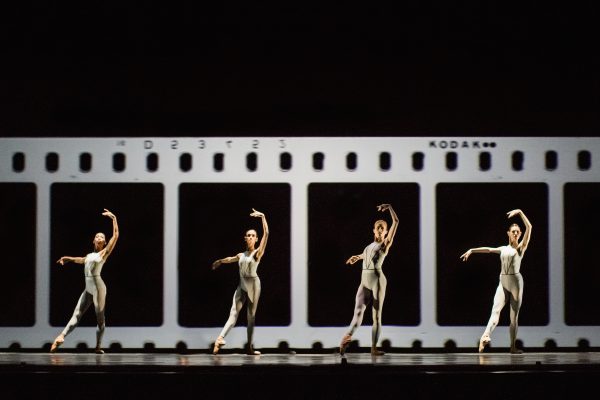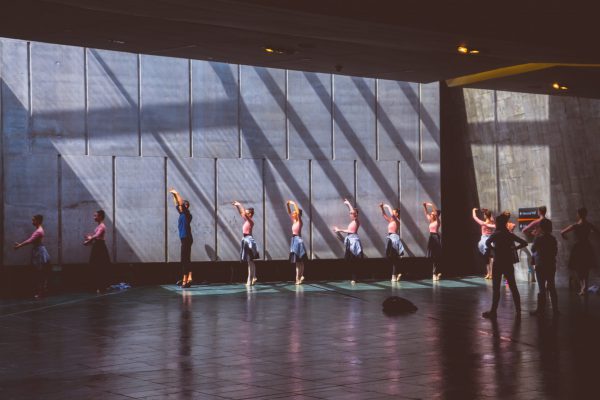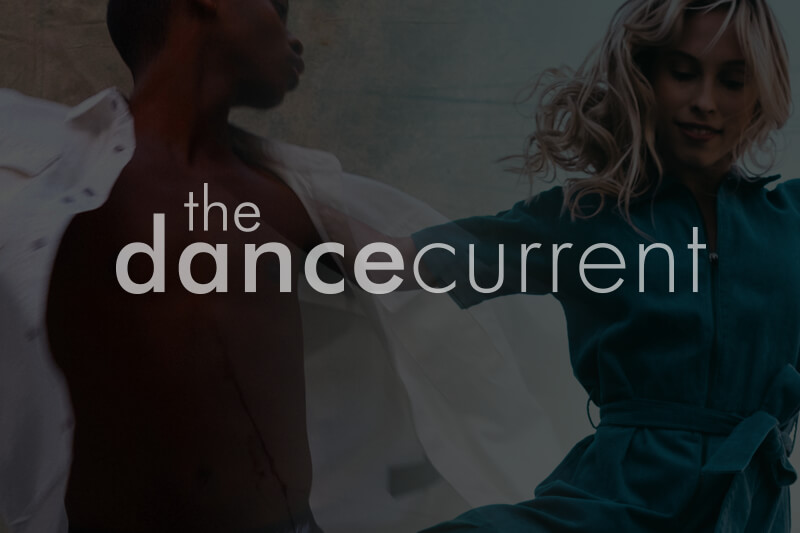Matriarchs Uprising is available on demand Feb 14-19.
Established in 2019 and curated by Olivia C. Davies, the Matriarchs Uprising festival presents contemporary dance by Indigenous women and provides insight into their creations through talks and workshops. The fourth annual festival includes workshops, master classes, circle conversations, a live double bill and a collection of free streaming videos.
The seven videos available on demand are an eclectic program of solos, and one collaborative pairing, each exploring themes of identity and ancestry in their own way. Some are set outdoors to connect with the land. Others are more inward-looking, providing scope for personal reflection as we witness the dancer’s thoughtful journey. Most of the works feature voice-overs that add specific meaning and context to the movement. After this series of deeply personal works that explore identity, ancestry and reconciliation, we’re left with the sense that there is always more for each of us to delve into when it comes to our own roots, our connection to the land and our relationships with each other.
Firewater Thunderbird Rising by Christine Friday
Amidst sounds of low drums, chanting and crows cawing, Friday emerges from behind a sheer black curtain. A blood-red braided rope is tangled around her body. “I am the messenger unfolding blood memory, carrying forward the love of our ancestors,” says a voice-over. She begins to unfurl the rope, slowly unwrapping it from around her body until it is taut, looped around her hands. A voice continues to speak about the strong connection to land and ancestors.
The rope becomes a mass covering her face. Moving from side to side, she searches, inquisitive, while her face is buried in the rope that seems to be smothering her. Finally able to remove it, she twirls the long rope, whipping the stage, sounds of crashing waves in the background, before she lays down and rolls herself up in the rope. Eventually able to rid herself of its burden, she places the rope down on the stage in a circle.
Donning a hat made of tree bark and holding a branch as a cane, Friday says, “Welcome, my name is Beatrice. I’m a big beaver house.” Vaudeville-style music plays and she has the casual air of a standup comedian, explaining that she used to be a birch tree who got into trouble after drinking too much sap. To redeem herself, she made an offering to the beaver, and became their house.
She travels slowly around the stage in contemplative, insular movements, and the intensity builds as a voice-over talks about colour-blind narratives, institutions that assimilate and the connection between capitalism and colonialism. Friday moves with deep-seated emotion and urgency. She slowly turns under a red glow as the voice-over talks about family and forgiveness and she gathers energy, sending out strength that can be felt through the screen.
Friday is Anishinaabe from Bear Island, Lake Temagami.
parasol chapter x by Sophie Dow
Dow sits cross-legged on a clear box as other images of her are superimposed on top of the video. “I’ve lived many lifetimes,” says her voice-over as Dow steps down, walking forward and completing the same sequence, ending with a stab to the gut after each identity listed: “I’ve been a warrior, I’ve been a child, a temptation, a queen, a human, a traveller, an animal, a ghost, a healer, a hunter, a trickster, a thief.” The creator tells her this will be her culminating lifetime.
She walks among hanging white drapes, looking at her hands and reaching upwards before returning to perch on the box in contemplation. The voice-over talks of filial networks, stars and ancestral campfires in the sky. Her image is superimposed in all four directions before she seems to fall down a rabbit hole and emerges in a black box stage.
Unsure where she’s ended up, Dow runs around the stage, among a Canada flag chair, a flag with rainbows on each side and a parasol made of furry, fluffy red spokes. Through leg lifts and cartwheels, she moves around with the parasol and begins to gallop in time with a drumbeat.
She crawls towards red high heels and struggles to put them on as we see home video footage of a child trying on oversize shoes. Finding her footing, just as the child did, she struggles to get up with heels on before finding her stride and balancing in one shoe and doing high kicks.
Electronic music plays as she walks all over the flag and kicks it up onto her face where it seems to attack her. She falls into the chair and ends up burdened by flag, parasol and chair, which seems to be a commentary on patriotism and a complicated relationship with Canada. We feel her frustration and sense of entrapment as she casts off these objects to reclaim her identity.
Dow is Métis-Assiniboine from Winnipeg.
Gather by Sandra Lamouche
Standing in a grassy meadow full of birdsong, Lamouche explains that Gather is a piece inspired by the soniyaw niyipsi (silver willow) that grows across Alberta. The plant produces edible berries that are used by the Blackfoot and Cree not only as food but also as jewelry and spiritual protection.
The first half of this piece is a lengthy description of Lamouche’s inspiration and motivation for creating it. She wanted to make a connection between the seasons and intergenerational struggles of her people including both the trauma and the resilience. She sees the time of cultural deprivation when certain practices were outlawed as the winter of her people, whereas this period is akin to spring, with a resurgence of cultural knowledge based on their legacy.
In the bright light of the sun, she begins to move with limbs out long, opening up to the natural world, both offering and gathering energy at the same time. Her voice-over says, “They would be proud of who I have become. I watch the trees and feel the weather in my cells. Melting in my bones like the thaw of trees and earth. Life begins to open up.”
Her voice continues speaking of traditional offerings such as tobacco, sage and sweetgrass. Her movements are grounded in the earth and gesturing as she talks poetically about gathering the silver berries, gathering her culture that has been restored and planting seeds for the future. She is content to share this calming feeling of regrowth and natural cycles that sustain us all.
Lamouche is Cree from the Bigstone Cree Nation in northern Alberta.
ȼ̓inaⱡ upxamik by Samantha Sutherland
On a dark stage, Sutherland’s hands frantically move from her upper back to her face, and then to her back again. The sound of wind adds to the isolated tone, and she feels through the darkness to move towards a spotlight.
She looks up as a mocking voice says, “What do you know? You can’t speak on behalf of a people; that’s counterproductive. You’re an imposter, you didn’t grow up in it; everyone knows their stories, you know nothing, you’re not doing this right.” It continues with various self-doubts, a struggle to reconcile her identity as someone who didn’t grow up with their culture.
As she tries to enter the spotlight, she can’t quite reach it. An invisible barrier holds her back. She struggles to crawl into the light and lays down. The light moves, and she explores the darkness again to find her way back to the light. Some of the sequences are repetitive as this goes on for a while.
Searching for something and unsure, her hands move again, more frantically, around her face and body. She pulses to the low drumming and reaches out in long lunges. As she walks and then gallops in a circle, other versions of her are shown, also moving in the circle, her multiple identities circling, approaching her, sometimes overtaking her. We look on, hoping she will find herself before they catch up.
Sutherland is from the Ktunaxa Nation.
beguiling (the) land by Jessica McMann
Less a dancefilm and perhaps more of a movement film, McMann’s work is a statement about land and the environment. Flashes of grassy plains, sky, marsh, snowy forest and a tree canopy break up the black screen. We see buffalo walking along the plains, a gopher poking his head out of a hole and a group of elk walking up a grassy ridge.
The film holds on an image of a tree canopy seen from below, and the slowly swaying trees are calming, meditative. A noise grows louder, and it’s unclear what it is until it begins to sound like jingle dresses. The image of the trees still onscreen, the movement is hinted at rather than shown explicitly.
After a cut to grassy plains, a voice-over says, “I cannot help but feel a sense of bitterness when I look at this land covered in fences, farmland. It’s a bitterness that sits in my mouth, in my gut. Wishing for the one thing that will never happen.” We see buffalo roaming the land. “This is my traditional territory. This is the land of my ancestors. All of my grandparents who have gone before me.” Decentring human movement and focusing on other beings, this piece is a meditative ode to Cypress Hills, its history and its living memory.
McMann is Cree from Cowessess First Nation.
Kiyâm and or ThunderBeing by Jeanette Kotowich
In perhaps the most experimental video, with unique editing and multiple camera angles, Kotowich brings us into her apartment and begins the piece with a shot of her bathtub filling up and her legs and feet plunging in. The camera looks down at the floor as she moves to the living room, and we see her legs and feet roll across the screen.
Kiyâm means to be at peace with oneself in Cree, and Kotowich seems to be exploring that idea and enjoying her solitude as she kneels on the floor, staring at the camera. Behind her on the wall is an image of an elderly woman holding a sign that says “donor.” It’s a bit unsettling and unclear whether this is a fixture of the space or added for this short film.
A split-screen shows Kotowich from two different perspectives as she moves the two cameras into different positions. With her head hanging down, her hair falls in a curtain as she seems deep in thought, moving to the beat of the electronic techno music. With no other evident narrative, she seems to be dancing for herself, to feel at one with her own identity and explore her impulses.
She redoes her hair and puts on thunderbird earrings with lightning bolts hanging down. A trip through the kitchen and back to the living room provides a moment for a costume change, and she dances back into view, putting on a short metallic dress. The transformation complete, she continues to move contentedly in her new outfit as the camera leaves us with a spinning record that says “Kiyâm.”
Kotowich is Cree-Métis from Treaty 4 Territory in Saskatchewan.
Within the Layers by Animikiikwe Couchie-Waukey with Bella Waru
A split-screen shows two women kneeling on separate beaches, the water behind them. They roll in the sand, rock back and forth and outstretch their arms like wings. At times, they perform the same movement in unison, and at others, they move to their own timing. They move with purpose and intention, seeming to be in deep reflection.
Couchie-Waukey and Waru have very different movement qualities, but they share a sense of purpose in exploring their identity and connecting to the land. The second scene shows each of them in different grassy locations: Couchie-Waukey in front of a body of water, Waru with a cityscape in the background. This duality of location adds to their unique styles, Waru’s with more precision and Couchie-Waukey’s with more deep resistance. Moving to the rhythmic beat, they seem inspired by hip hop, incorporating body rolls into the fluid choreography of turns and jumps.
In the third section, Couchie-Waukey is on her own on a stage. A voice sings, “A fire burns in the heart / a slow dancing flame / stuck in a dangerous storm / roots grow into the earth / branches reach for the stars / surrounded by all the land of your ancestors / reflect on your earth life / the picture is now in focus.” Slowly, deliberately, she runs in diagonal lines, raising her arms, rolling through movement sequences with momentum, down to the floor and back up again. The ending seems sudden as she kneels and we cut to black, a sense of incompletion, wondering if there was more for her to explore.
Couchie-Waukey is from the Nipissing First Nation and Waru is Maōri.
Tagged:





